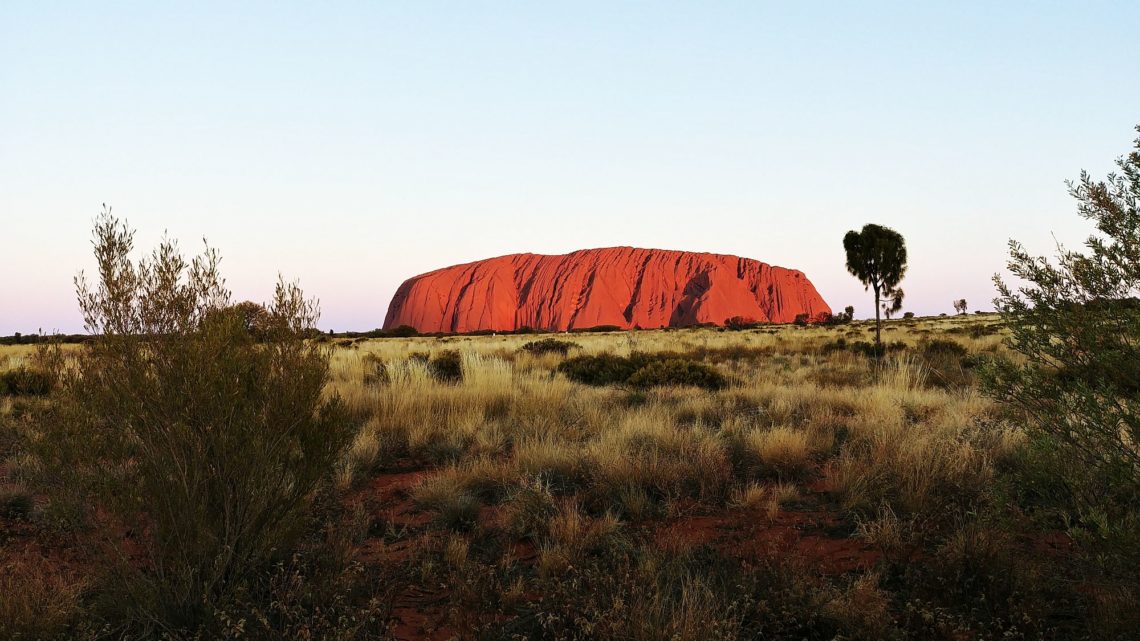
Uluru tour – Day one: Uluru
Day 99 – Uluru-Kata Tjuta National Park, Australia
To go see Uluru, or the big red rock formerly called Ayers Rock, everybody knows, you have to go to Alice Springs. You can then, like me, think that Alice Springs is a few kilometres from Uluru, or even at the foot of the rock. Or you can discover, shortly before arriving, that it is in fact 463 km away, and no, there aren’t any shuttle bus taking you to it. This ain’t Europe, this is Australia.
That means renting a car, or going on one of the numerous tours taking you to it. I chose a tour, since it included a guide, camp fees, meals, and so on. And fun activities. And by booking through my hostel, I got to leave my extra stuff for free there, a free night when coming back, and the lending of a sleeping bag.
My three-day tours included Uluru, Kata Tjuta (the Olgas), and Kings Canyon. And a camel ride. And an emu farm. And the centre of Australia. And a talk about what to do if bitten by a serpent (one of the highlights being, “now is the moment to take a selfie with it”). As I said, fun activities.
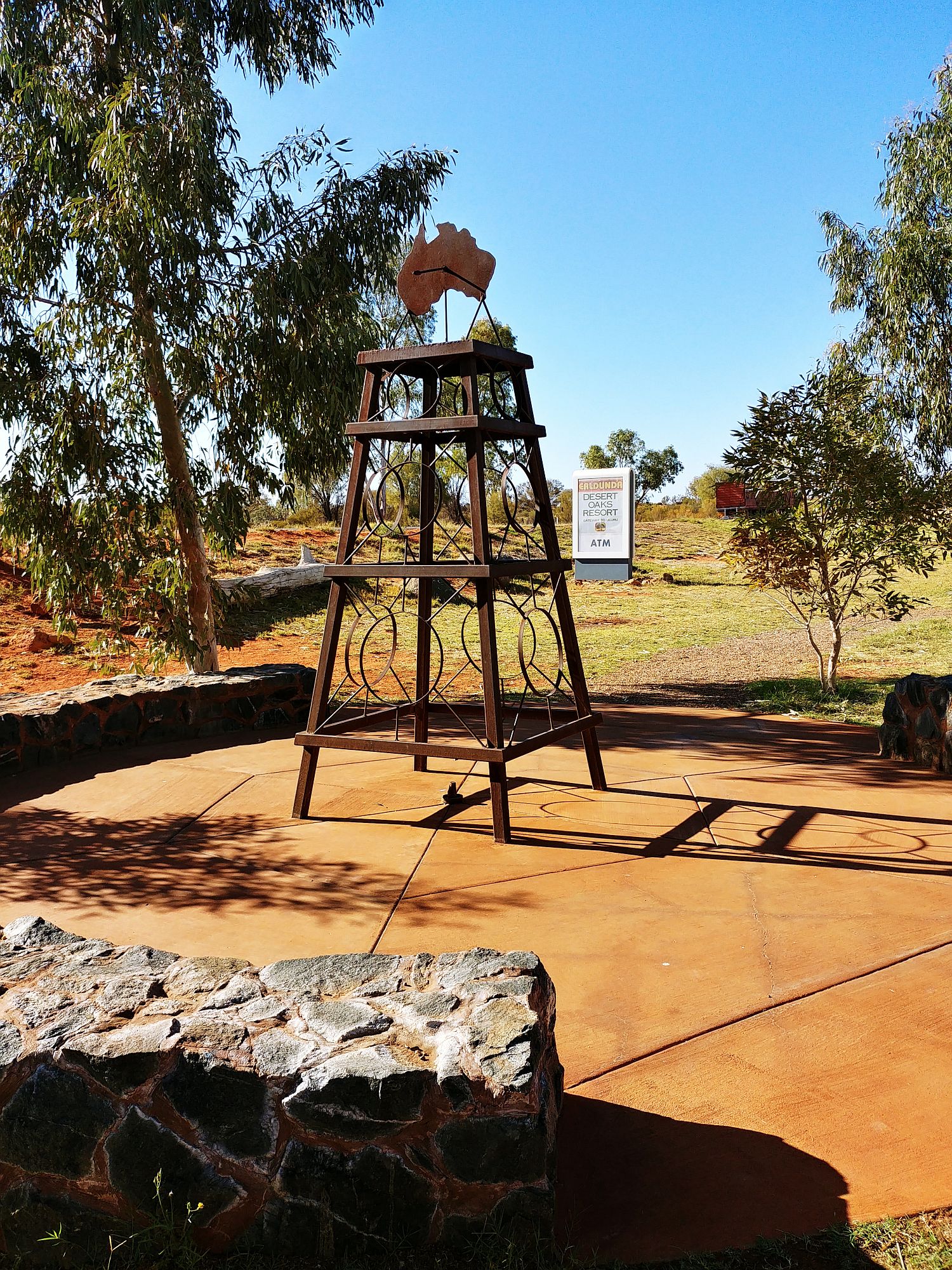
The centre of Australia
In my dormitory of 6 beds, we were actually 4 with myself going on this tour. So we coordinated in order to get up together, and wait for our pick-up at 6 am. After a bit of a wait, our bus came, with a trailer in tow in which to store our camping stuff.
With 5 hours of driving before us, I took out my pillow and snoozed as much as possible. We made several stops, to rest stations, to refuel, go to the bathroom, look at the emus, let cattle cross, that kind of things.
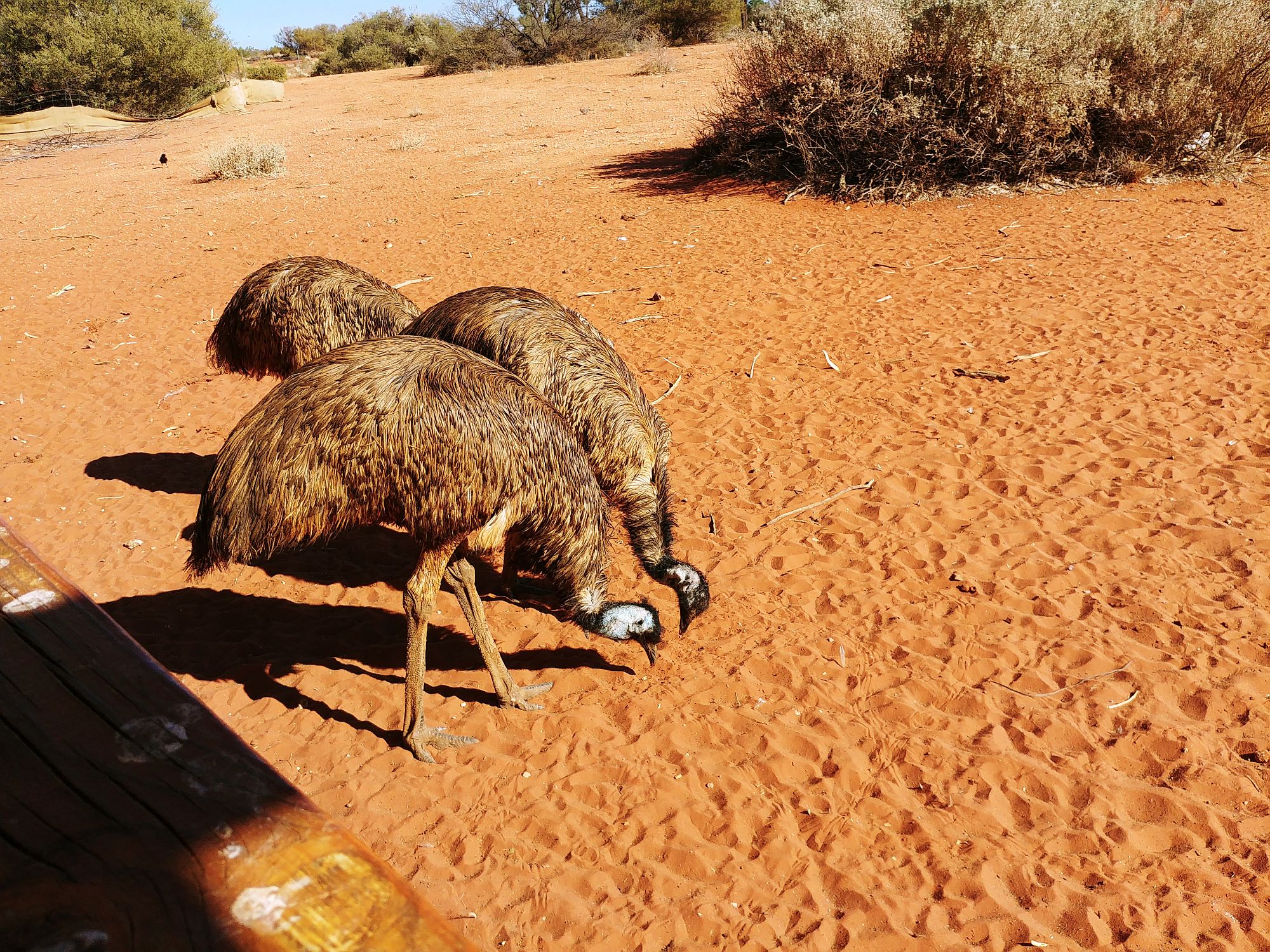
Emu farm
We had a speech from out tour guide cum driver cum GO (gentil organisateur) about not hesitating to ask for a bush toilet stop, taking advantage of opportunitrees and so on.
Before stopping to the camping site for lunch, we stopped for firewood. A nice occasion to walk in the bush (and a safety talk about snakes, petting -strongly discouraged-, taking a selfie with one only if bitten, to help with identification, and in general not to worry about them).
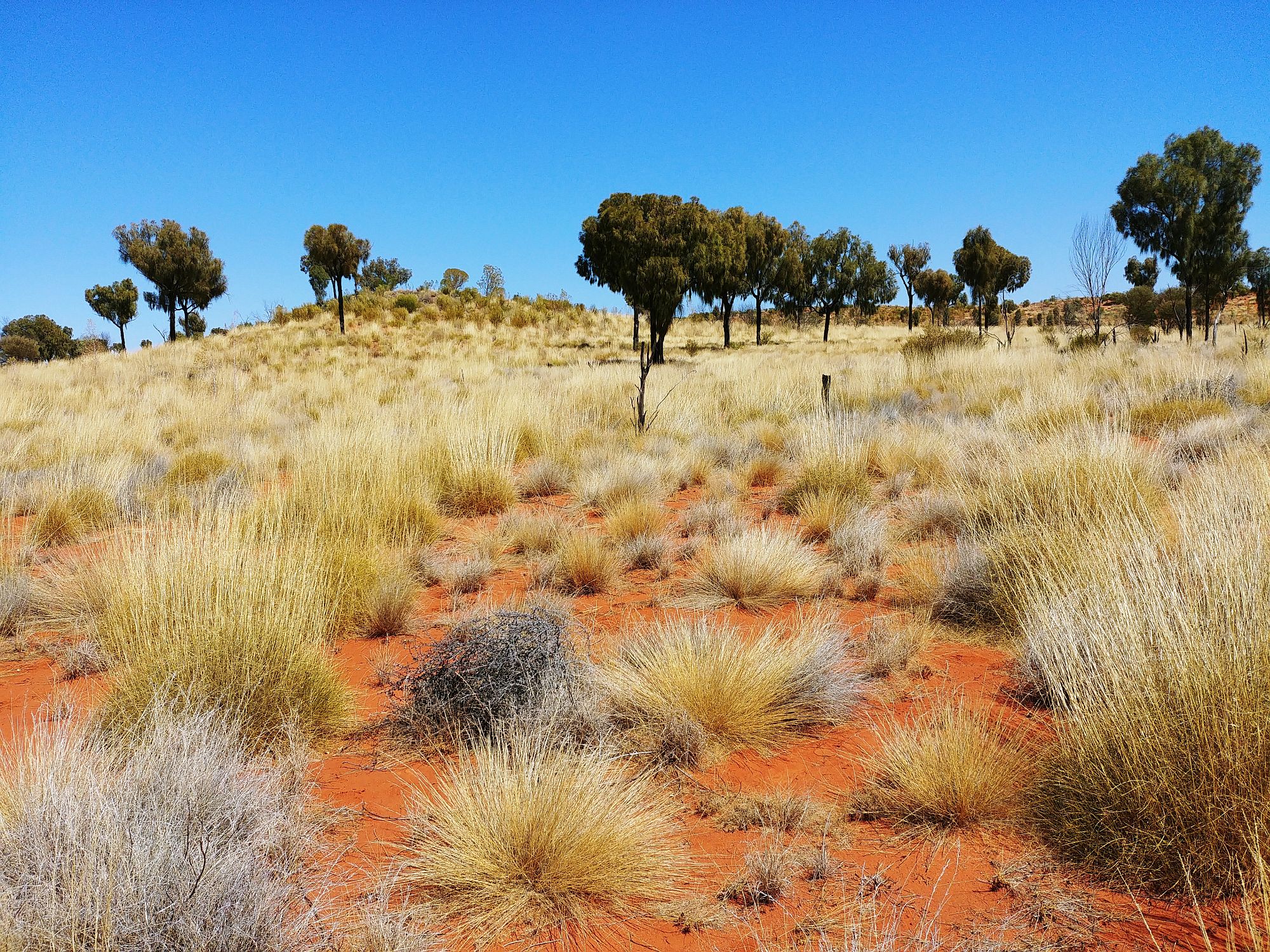
Looking for firewood
After loading the wood on top of the trailer, we drove to the camping, where we unloaded the gear, the wood, ate lunch, and went on the lookout to get our first glimpse of Uluru.
After that, back in the bus, and we finally entered the Uluru-Kata Tjuta National Park. Most of us, I think, were already aware that the Anangu people, the traditional owner of the land, discouraged people climbing Uluru. But our guide reminded us of it, and made a nice (guilt-tripping) speech asking us to respect their wishes. At the end, I don’t know if anyone would have dared say they wanted to climb it.
He dropped us at the eastern point of the base walk, a trail that goes around Uluru. Some parts are marked, asking visitors not to take pictures/videos of the rock, as it is a culturally sensitive area.
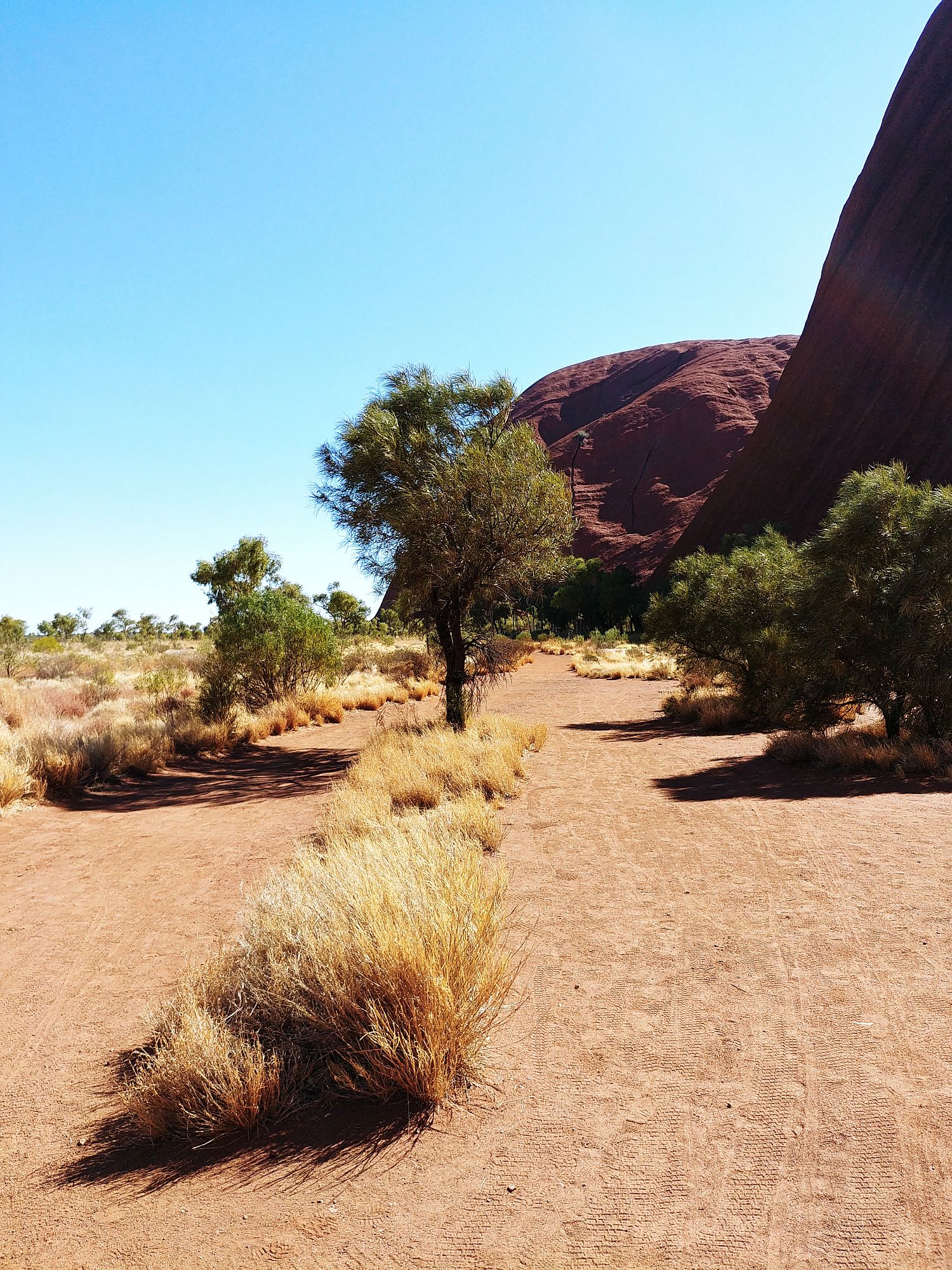
Uluru – Base walk
Of course we followed the southern face of the rock, which means that the sun was on the North and the slopes mostly in shadow. So my pictures are either too dark or too light.
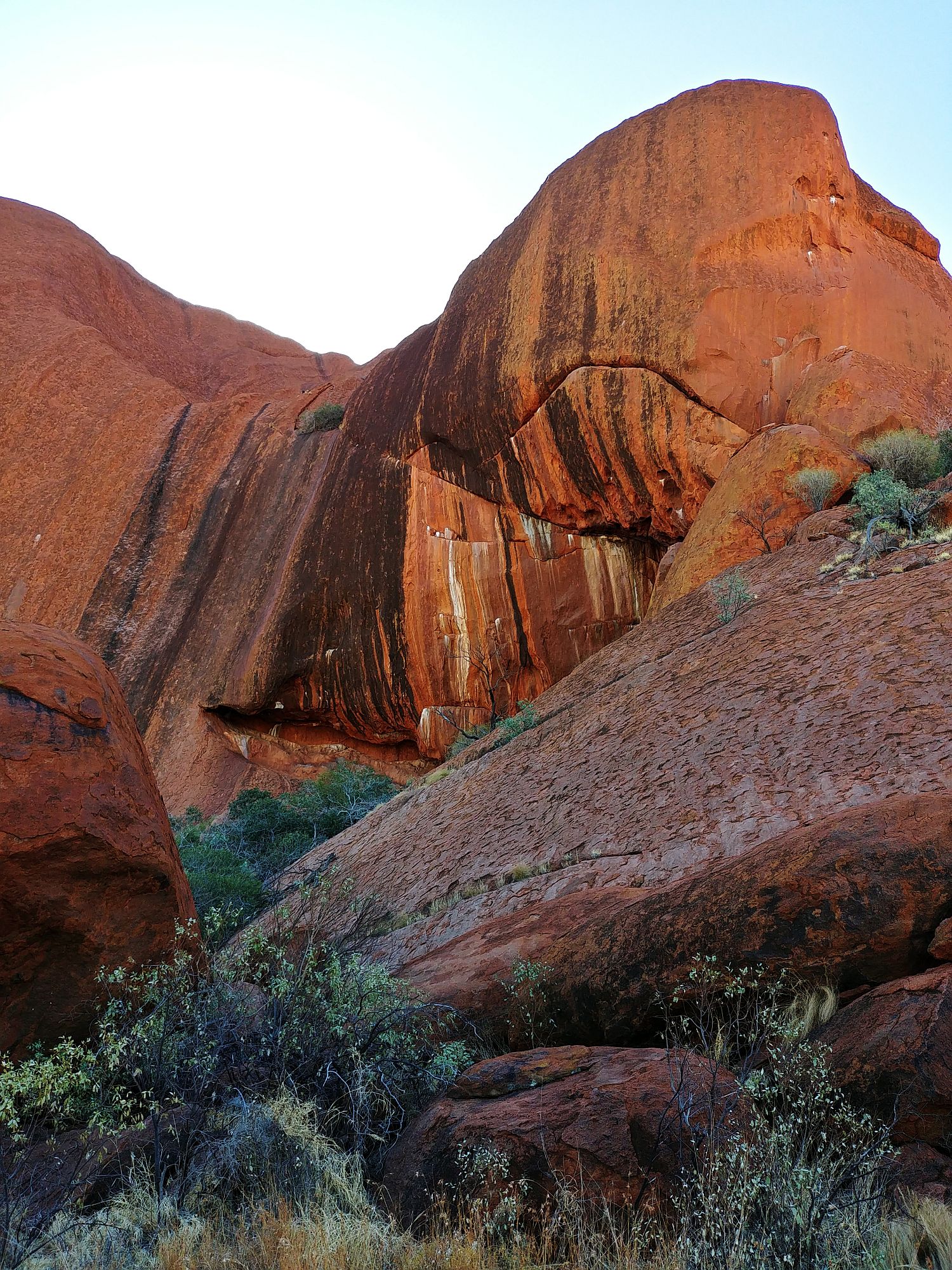
Uluru – Marks from water run-offs
We had a map, a rendez-vous point, and a time limit, which gave us ample time to walk the trail, take pictures, and read the signs about the Aborigines myths. See further down for the stories of Tjukuritja, the ancestral beings from the creation time.
There is a waterhole at the base of Uluru that seems to be there year-round, and is where the story of Kuniya takes place. A nearby cave offers shelter and shows rock paintings, more map than art, it seems.
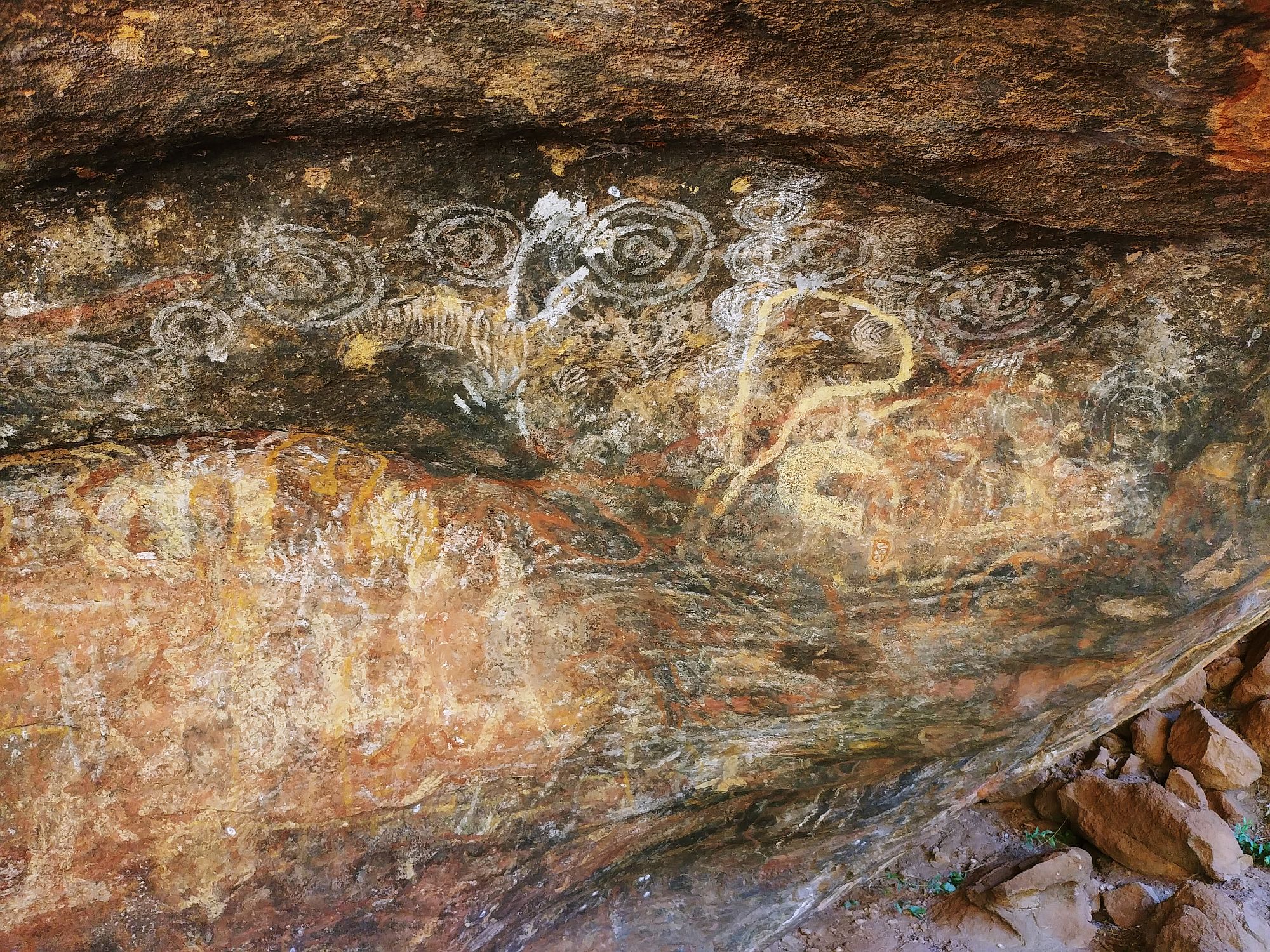
Uluru – Mutitjulu cave
At the end of the walk, our guide took us a bit further on the next part of the walk, the Mala Walk, and showed us some special caves, some for teaching, some that were only used by men, some by women, the kitchen cave (with emu recipe, well, actually, not a recipe, but the indication of the perfect rock to cut the head and empty an emu without putting viscera everywhere in the cave), and so on.
We went then to a spot further to have a global view of Uluru during sunset. There are a few specific spots with parking and viewing platforms to watch sunsets and sunrises over Uluru and the Kata Tjuta. We had snacks, bubbly, and the company of more than 5 others buses doing exactly the same thing. (See picture at the head of the article.)
Back in camp, by night, we made different groups to prepare diner, light the fire, wash the bubbly glasses, and so on. We learned how to prepare our swags for the night, and what a night it was. The sky is crystal-clear, with stars and the Milky Way and shooting stars and the occasional plane or satellite passing over.
I went to bed a bit early to read, and someone had brought a guitar, and I just laid down, listening to the singing, watching the stars, and freezing just a bit because being tall in a standard swag doesn’t cover totally one’s shoulders.
(What’s a swag, you may ask? It’s a typically Australian way to avoid using a tent, and actually it’s derived from the pioneers’ bedding. It is a heavy canvas rectangle bag with twin zippers, one on each upper long side. One short side is closed, one short side is open, with a flap. There is a mattress on the bottom. You open it fully, lay your sleeping bag, gratefully slide into the lot, close it up, and use the flap to hide from monsters if necessary.)
Going further: the science behind Uluru
If you are interested, a few words about the science behind Uluru and the Kata Tjuta. They were formed at the time when the centre of Australia was a big inland sea. Around 350 millions years ago, some mountains decided to grow by the sea, then of course there was some water melting making a big river going from the mountains to the sea, taking with it big rocks. I think it’s called erosion, or something like that. You know, classic story.
Now, the bed of the sea wasn’t flat, indeed, there were a few big holes right in the way of the new water coming from the mountains with the big rocks. So the first hole got the big rocks, and the second hole got the small ones -basically, sand. The weight of sea and time ground these rocks together in one big giant rock (well, two), and when the sea disappeared and erosion started lowering the level of the ancient seabed, these two rocks stood out. The first one is Kata Tjuta, and the fact that is it many different rocks ground together explains its shape (more on that in the next article), and the second one is Uluru, a big rock made of -suprise- sandstone. It’s full of iron thingy, so it oxydizes at the contact of the air (it rusts, in a word).
Uluru stand around 300m above the ground, and around 6 km underground. I was going to ask if they had drilled that far down (which wouldn’t have pleased the Aborigines if that was the case), but more simply, seismologists studied the vibrations during earthquakes and determined the shape and length underground.
The spirituality behind Uluru:
I think that all religions have their creation myths. The Aborigines not only have their myths, called the Tjukurpa (or the Dreaming by white people, but it is not polite to call it that), but the physical proof of these myths, as shown by the marks left behind.
Uluru is full of the physical proof of the Tjukurpa, from the paw prints left by the devil-dog to the python-woman resting in her python shape. This is why Uluru is so sacred to them, and why they ask that visitor respect their belief and choose not to climb it.
The story I remember best is of the Tjukuritja python-woman Kuniya. On the other side of Uluru, her nephew was wounded by Liru warriors, who are poisonous snakes. One warrior is left behind to tend to the wounded man, as is culturally required. But he doesn’t take care of him.
Hearing that her speared nephew isn’t tended to, Kuniya arrives quickly, in her python form.
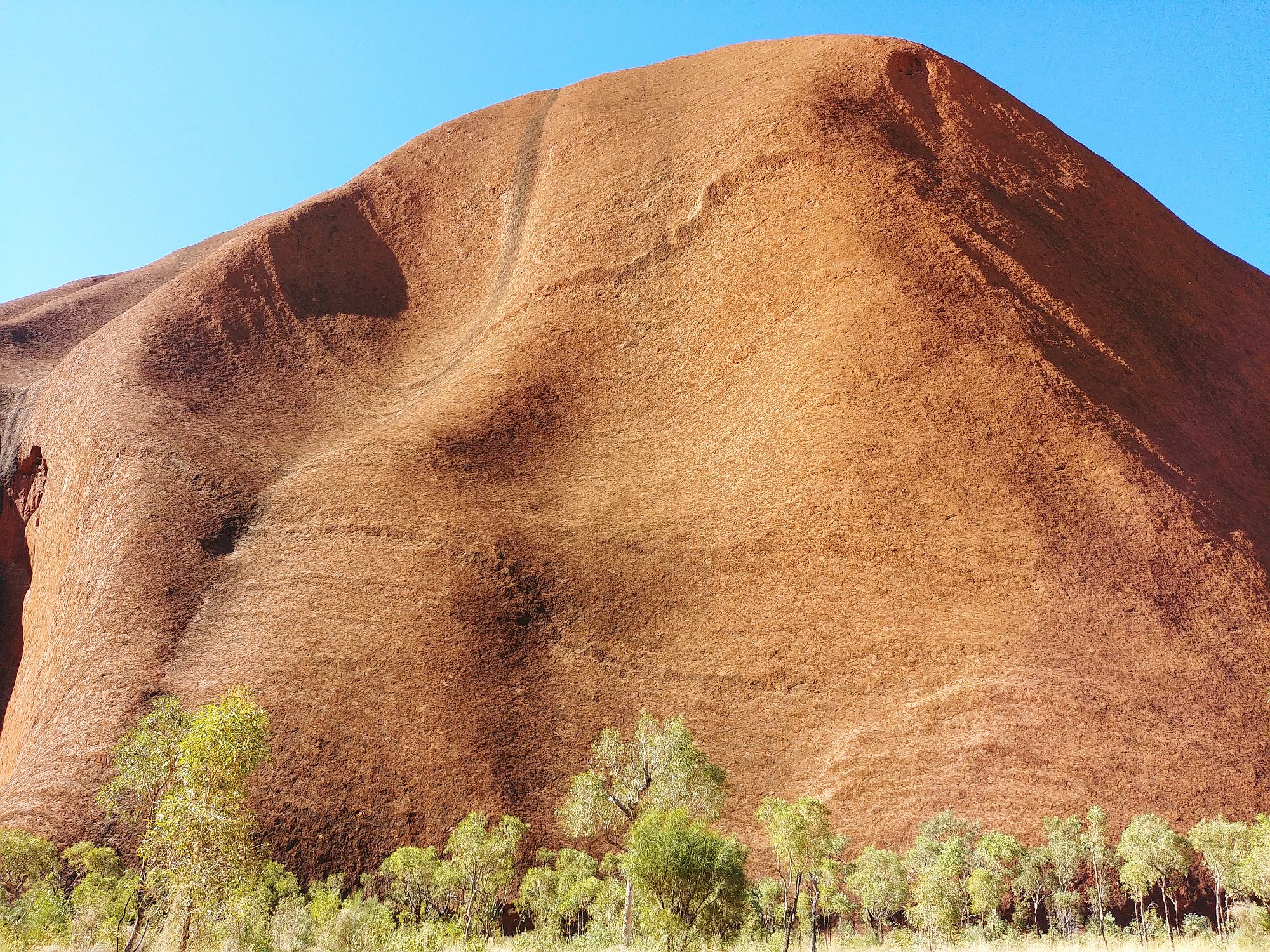
Uluru – Kuniya arrives in her python shape – you can see the snaking ridge going down from right to left
She regains human forms and prepares herself to fight Liru. She makes imma (ceremony), falls on her knees, let her fighting club fall down, and scoops handfuls of sands to cover herself against the poison of the Liru.
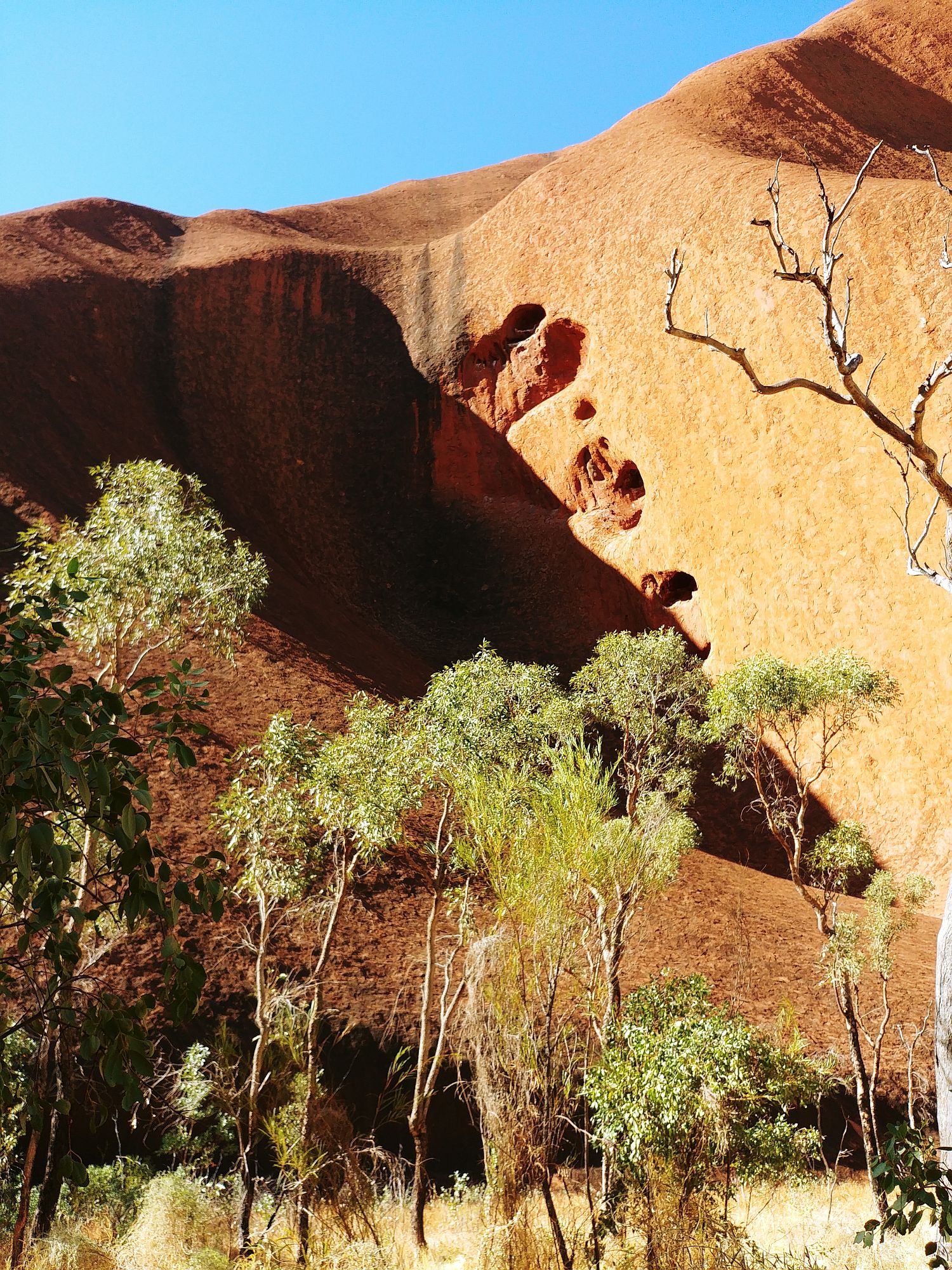
Uluru – Kuniya making imma
She approaches Liru in a fighting dance step, strikes him twice, felling him.
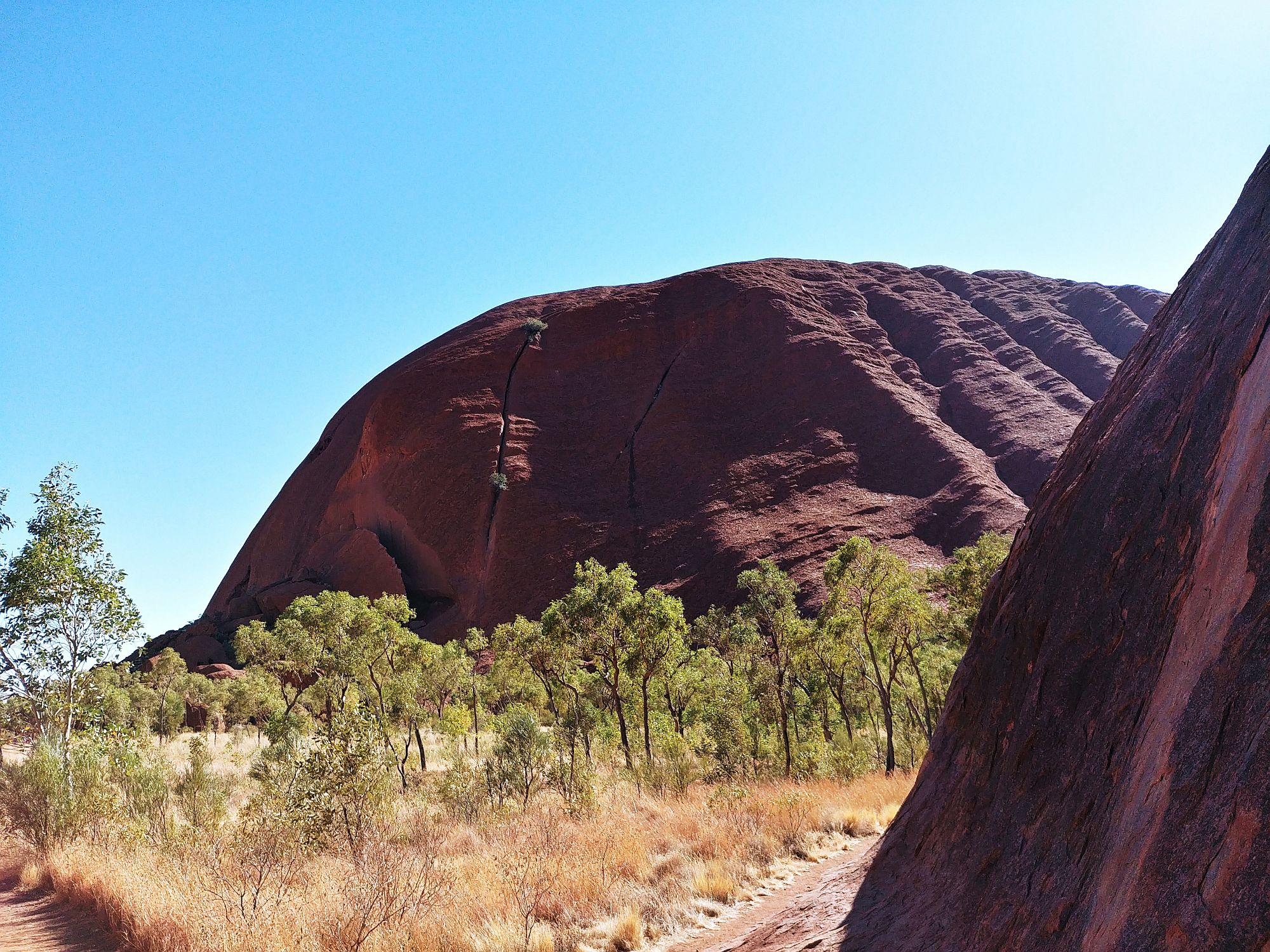
You can see the two vertical, parallel fissures of the blows
Then she changes back in her python shape and curls up, watching over the visitors.
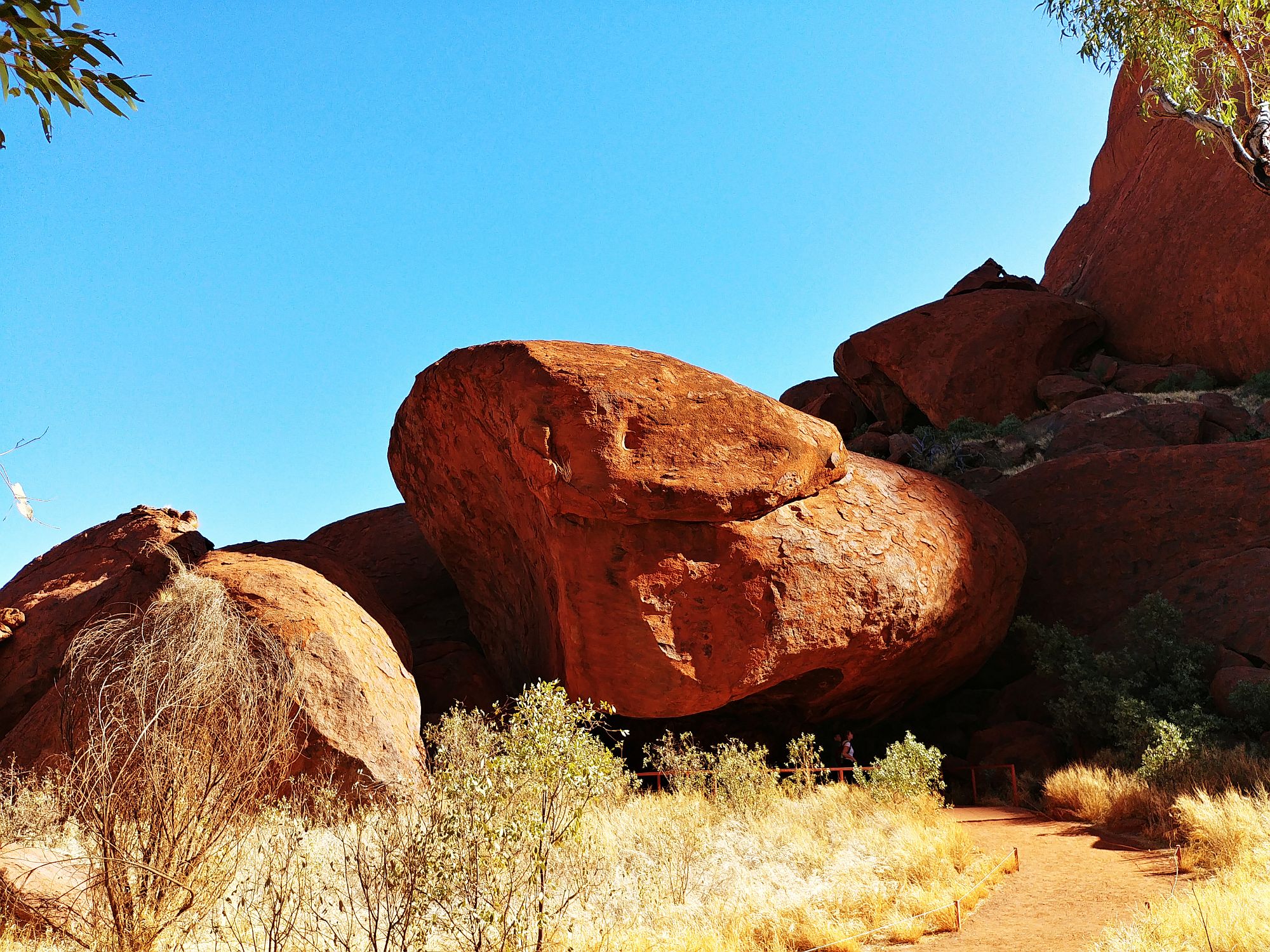
Uluru: Kuniya back in her python shape
Here is a better panel description of the fight:
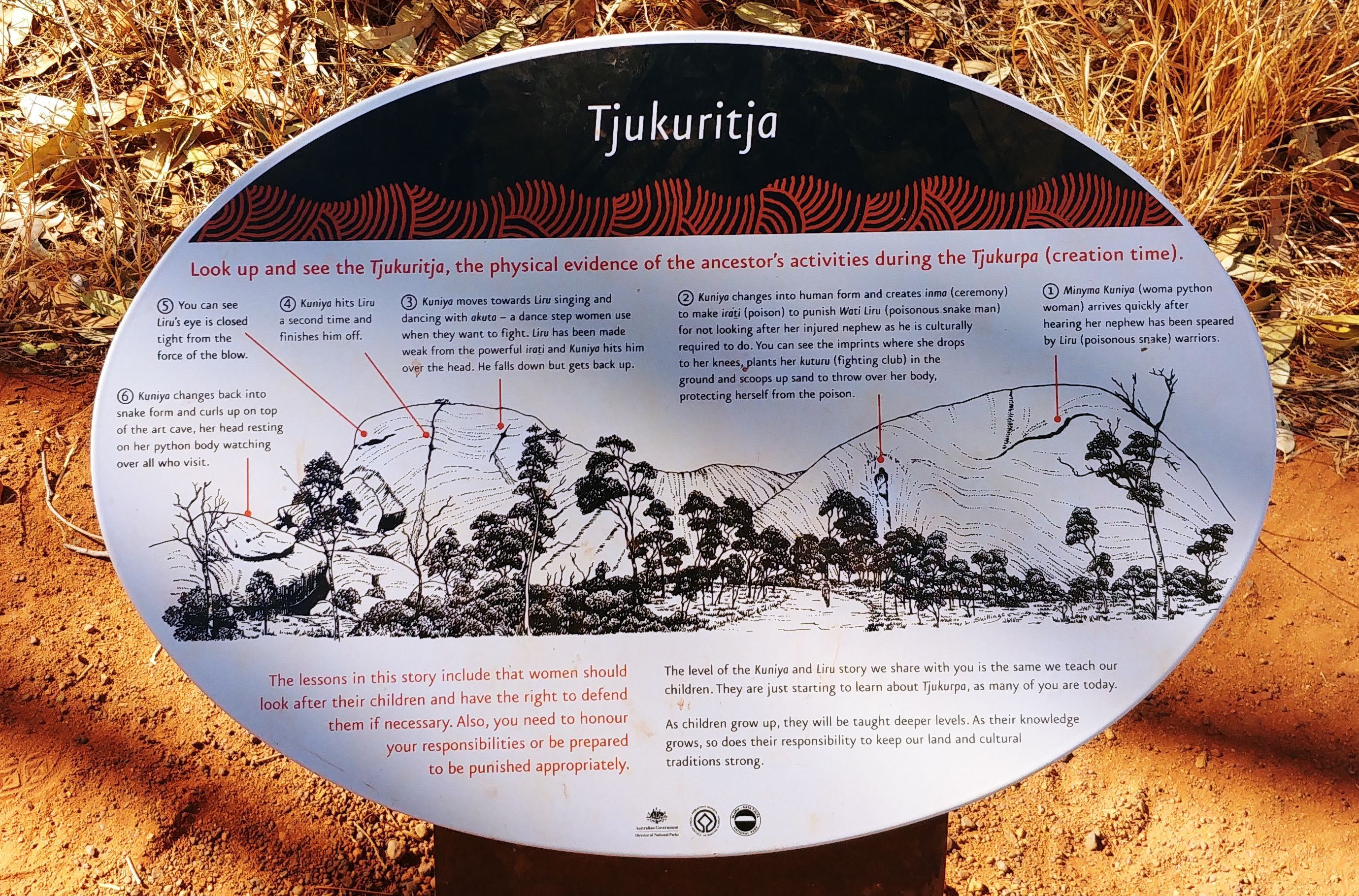
Uluru: the story of Kuniya and Liru
To see all the pictures of the day, please visit the gallery.
To read my account of day 2, click here.
Merci pour ces images, tout ce que tu racontes…on sent le plaisir que tu as eu à découvrir ces terres et ces rocks, et aussi les légendes! Tu nous les partages avec de belles illustrations!
Les photos sont splendides, comme d’habitude!